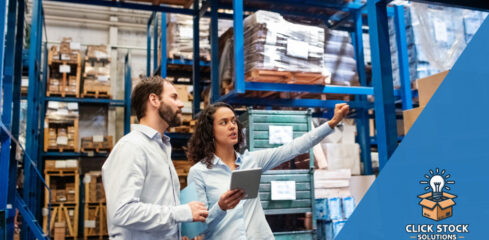When many small businesses start out, they purchase inexpensive software that addresses their most pressing needs. As these businesses grow, they often find that their tech stacks are no longer sufficient to support their current operations and future expansion.
Outdated tools can hold your business back and even turn customers away. Studies show that small business owners lose an average of 96 minutes a day spent on unproductive tasks, and American businesses lose up to $1.8 trillion annually due to outdated technology limiting productivity.
Knowing when to upgrade your tech stack is key to continuous growth, as the right retail software can simplify inventory management, improve the customer experience, and help you make more strategic, data-backed decisions. Equipping your team with software made to solve common retail problems saves time and increases profits.
This guide will explore a few signs that your current tools are inadequate and help you determine whether it’s time to start looking for new solutions.
1. Inventory Management Issues
It’s nearly impossible to maximize sales if you don’t have a clear picture of your current inventory. The following inventory management errors are warning signs that you should upgrade your retail solution:
- Overstocking. Keeping too much excess, slow-moving, or obsolete inventory in stock wastes storage and shelf space and reduces cash flow. To solve this problem, many modern inventory management systems alert you when certain products aren’t selling well, so you know not to order them again in the future.
- Frequent out-of-stock items. On the other hand, you may have popular items that are difficult to keep in stock. While simple spreadsheets may be sufficient for inventory management when first starting out, robust solutions can send you low-stock notifications and automate reordering, allowing you to constantly keep your bestsellers available.
Depending on your industry, automation may be seen as more or less critical. For example nearly half of grocery and apparel retailers (47% and 45%, respectively) said their leadership considers automation a strategic imperative, compared to just 21% of electronics retailers, and to an overall average of 40%. Some automation are front-end, like point of sale (POS) systems and customer service chat bots; others are backend like marketplace stock updates, reorder suggestions, stock transfer suggestions, and a single order fulfillment queue.
The more control you have over inventory management, the better you can understand customers’ needs and stock products that sell well.
2. Slow or Unreliable Checkout and Order Processing
Once customers decide they want to buy an item, the purchasing process should be as smooth as possible. If your business experiences any of these checkout issues, you may need new retail technology:
- Long checkout lines. Businesses with brick-and-mortar locations should be able to serve customers efficiently even when they’re busy. If your current system lags enough that people are waiting in lines during peak hours just to purchase from your store, it’s likely you’ve outgrown your checkout technology and should look for a new system.
- System crashes. While all technology may occasionally cause slight delays or issues, your retail technology shouldn’t frequently disrupt transactions. If customers report trouble purchasing products online or your staff can’t properly complete in-person transactions, it’s time to move on to a more reliable platform.
- Lack of support for newer payment methods. Payment and Commerce Market Intelligence (PCMI) projects that digital wallets like Apple Pay, Google Pay, and PayPal will outperform card payments for ecommerce in North America, with 41% of the market volume. Your retail software should let you keep up with customer preferences and payment trends so your business remains competitive and retains customers.
- Long online order processing times. If checkout happens online, customers shouldn’t face extended waits for ecommerce order updates. The right retail technology, in this case, fulfillment software, will reduce order processing times, enable faster shipping, and provide accurate tracking for an overall better customer experience without double entry.
If your staff spend too much time troubleshooting during checkout or order processing, a more robust retail solution could help them save time and put it toward more critical business tasks.
3. Shrinking Profit Margins
While your business likely tracks total revenue on a regular basis, this information isn’t enough to inform your pricing strategy and increase profit margins. Instead, you must be able to narrow in on the profitability of individual SKUs. Without this information, you may accidentally:
- Underprice popular items
- Sell some products at a loss
- Run promotions that cause you to lose money
- Struggle to cover your operating expenses due to limited cash flow
In such cases, you need a system with better reporting options. Without reporting that includes purchase price/quantity and selling price/quantity, it’s difficult to analyze profit margins, identify wasted stock, pinpoint sales trends, and understand which products customers prefer.
If you’re making pricing decisions based on instinct rather than reliable data, it may be time to upgrade your retail technology. While you can technically use Excel to track these numbers, it requires more manual entry, is prone to error, and can become quite outdated and unmanageable if you have several retail locations.
Once you have more visibility into item profitability, compare your profit margins with industry standards to identify key opportunities to mark up your products. For example, most liquor store owners mark up imported beers by 30-40%. If you were only earning a 20% profit margin on your most popular imported beer, you can now feel confident in increasing your pricing for that item or negotiating better rates from suppliers, knowing you have the demand and industry data to support that decision.
4. Difficulty Making Business Decisions
Disparate systems can lead to data silos, meaning your business data can’t fully come together to provide helpful insights and strengthen decision-making. Even if you can move data between systems, doing so manually can waste valuable time and lead to errors.
Integrations automatically send data between your different software solutions, eliminating the need for manual entry. For example, integrating your inventory management software or point of sale (POS) system with other systems can help with:
- Purchase order (PO) recommendations: If you’re struggling to send POs for your entire business or guessing purchase quantities, it’s a sign you need a better solution.
- Stock transfer recommendations: If you’re not sure which retail location is overstocked on a specific SKU and which ones need to be replenished, it’s your sign to upgrade systems.
- Accounting headaches: Are you guessing your numbers at the end of the month? This is another sign. When sales data automatically flows from your retail solution to your accounting software, you can complete financial reporting more efficiently and accurately.
- Ecommerce performance: Fulfillment delays are usually the first sign that something is wrong in your business’s operations. This type of delay leads to poor reviews, more returns, and wasted time and money. Sales in your retail locations might be going smoothly, but how are your online sales?
Before adopting a new retail solution, investigate which platforms it integrates with to determine whether it complements your current tools.
5. High Shrinkage
When you think of shrinkage, you likely think of theft. In 2024, retail stores lost an estimated $45 billion to retail theft, and this number is expected to increase to over $53 billion by 2027.
However, shrinkage refers to inventory lost for any reason other than a legitimate sale, including product damage, administrative errors, or vendor fraud. If your business has experienced either type of shrinkage lately, here’s how upgrading your retail technology can help you prevent these issues:
- Theft or fraud: Modern features, such as shrinkage reports, security camera integration, and employee transaction screen recording, help prevent theft and fraud.
- Expired or recalled products: Items with a lot ID or expiration date should be tracked so if products are disposed of, it is reconciled for that reason, not because of general loss or missing.
- Marketing, sales, and gifts: Tracking products used for events, promotion, or gifts is important so you can allocate spend and stock degradation to the correct source. If you remove sellable stock from a shelf and it’s not logged, you risk attributing this to shrinkage when it was actually intentional.
- Other shrinkage issues: Your inventory management system should support real-time inventory tracking and custom reports that help you pinpoint and solve shrinkage issues. High value products, like electronics and liquor, are at higher risk of theft and breakage so they require detailed tracking and history logs.
By leveraging retail software with advanced risk management features, you can minimize shrinkage and mitigate the impact of any product losses.
Ready to Upgrade Your Retail Technology?
Ultimately, your business should aim to provide the best customer experience possible. As your business grows, you need the right tools to effectively serve customers and address their needs. Updated retail technology is well worth the investment for both your customers and bottom line.







